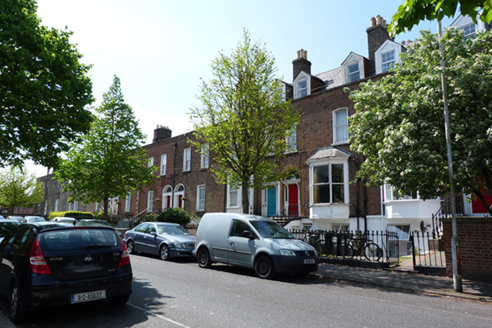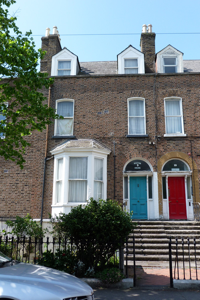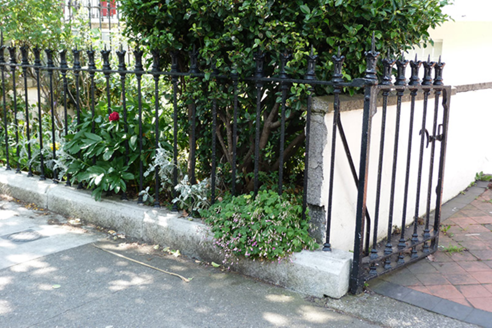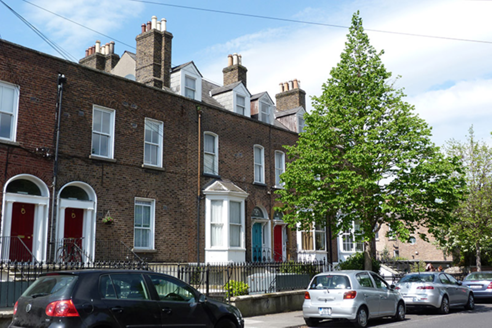Survey Data
Reg No
50110169
Rating
Regional
Categories of Special Interest
Architectural, Artistic
Original Use
House
In Use As
Apartment/flat (converted)
Date
1880 - 1900
Coordinates
315407, 232658
Date Recorded
04/05/2017
Date Updated
--/--/--
Description
Terraced two-bay two-storey with dormer attic former house over raised basement, built c. 1890, having return to rear (west) elevation and canted-bay window to front (east) elevation. Now in use as apartment. Pitched slate roof, with dormer windows, brown brick chimneystacks having clay pots, partially hidden brick behind parapet with granite coping, and cast-iron rainwater goods. Brown brick, laid in Flemish bond, to walls, with masonry plinth course over lined-and-ruled rendered wall to basement. Square-headed window openings to basement having masonry sills and cast-iron security grilles. canted-bay window to ground floor, having hipped slate roof, carved timber cornice, sill and timber panelled apron. Segmental-headed window openings to first floor with raised rendered reveals and masonry sills. One-over-one pane timber sliding sash windows throughout. Square-headed door opening to basement, glazed timber panelled door and overlight. Round-headed door opening with painted brick reveal, carved timber doorcase comprising timber pilasters with brackets supporting stepped timber cornice, plain glazed fanlight and sidelights, timber panelled door. Shared rendered platform and steps with decorative cast-iron handrail. Cast-iron railings on granite plinth wall with cast-iron pedestrian gate to front. Located on west side of Stamer Street.
Appraisal
This building retains much of its early fabric, notably timber sliding sash windows and a timber panelled door, adding to its historic character. The cast-iron railings and pedestrian gate which bound the front garden area provides a sense of enclosure marking out the private space associated with the house. The detail to the cast-ironwork attests to the skill and artisanship in iron-working at this time. Stamer Street was named for William Stamer, Lord Mayor of Dublin from 1809-1819. The closure of Portobello Gardens in 1865 and the later infilling of the Portobello Basin freed up residential development land in the area, with housing dating predominantly to the late nineteenth century. Though later in date than the buildings to the south, this terrace maintains the parapet height and fenestration pattern of its older neighbours, contributing a sense of uniformity to the streetscape.







